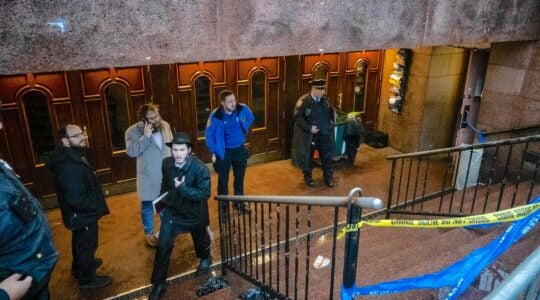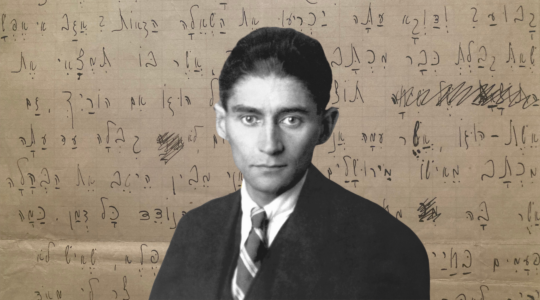After years of legal and even physical wrangling by contentious chasidim, the New York Court of Appeals confirmed last week what individual Satmars already knew: it will be individual chasidim — not judges in Albany — who will decide, by voting with their feet, the rebbe to whom they will give allegiance.
The state’s highest court upheld lower court decisions, ruling that the direction that religious institutions choose to take is a religious choice beyond the realm of the state judiciary.
The ruling was cheered by chasidim backing Rabbi Zalman Teitelbaum, the rebbe with the largest following in Satmar’s Williamsburg center. But chasidim backing his brother, Rabbi Aaron Teitelbaum, saw the ruling as allowing them to maintain their own synagogues and yeshivas in
that Brooklyn neighborhood that not long ago was almost the sole domain of the “Zalis,” as the first faction is known.
Reb Aaron remains chief rabbi of the Satmar village, Kiryas Joel, in upstate Monroe.
Rabbi Hertz Frankel, principal of Bais Rochel D’Satmar, told The Jewish Week that the Satmar “street” accepted the court’s ruling without protest or disruption. “It’s quiet, peaceful, everyone taking their usual seats in their own respective shuls, their children take their seats in their own respective schools, and life goes on,” he said.
The rabbi added, “It’s been quiet for a while around here. Reb Aaron’s chasidim built their own congregation. They’re running their own community. And Reb Zalman Leib is continuing to run his.”
Rabbi Frankel, whose school, one of the oldest Satmar institutions, is within Reb Zalman’s orbit, estimated that in Williamsburg there are 6,000 students in Reb Zalman’s schools and 3,000 in Reb Aaron’s.
One Jewish community professional, unaffiliated with Satmar, estimated that Reb Zalman has a 60 percent-to-80 percent advantage among Williamsburg’s 56,000 Satmars.
Rabbi Frankel, who has often acted as a spokesman for Satmar going back to when it was unified, added that Kiryas Joel, with almost 20,000 Satmars, is now far from monolithic in its support of Reb Aaron.
“Reb Zalman Leib opened schools in Kiryas Joel, and a shul,” said Rabbi Frankel. “And Kiryas Joel now has a third faction, called Bnei Yoel," named after Reb Yoel (Joel) Teitelbaum, the original Satmar rebbe for whom the village is named.
The father of the feuding brothers, Reb Moshe Teitelbaum, Reb Yoel’s successor, divided his spiritual kingdom prior to his death in 2006, giving Kiryas Joel to Reb Aaron and the larger but more amorphous Brooklyn territory to the younger brother, Reb Zalman. The feud quickened when Reb Moshe was physically weakened by illness, and though his will specified Reb Zalman as his Williamsburg heir, Reb Moshe did not, or could not, effectively intervene when resentments percolated in the Aroni camp.
After Reb Moshe’s death, Reb Aaron and his followers made a move to acquire Satmar’s Williamsburg institutions, running their own slates for various boards of directors, and going to secular courts to verify or acquire the rest, a power play the court resisted.
The court stated, “The First Amendment forbids civil courts from interfering in or determining religious disputes, because there is substantial danger that the state will become entangled in essentially religious controversies or intervene on behalf of groups espousing particular doctrines or beliefs.”
Although several reports depicted the feud as one for control of millions of dollars in assets, almost none of the Satmar communal institutions are liquid and neither brother is seen as gaining financially.
David Pollock, associate executive director of the Jewish Community Relations Council of New York, observed that what has happened over time is “a bifurcation of Satmar,” not unlike what has happened with nearly a dozen other major chasidic groups that have seen massive population growth.
“When a chasid comes” with a request to the rebbe and he needs an answer, “it’s very difficult for that to happen when there are tens of thousands of chasidim,” noted Pollock.
Offering a sociological view of the situation, he added that chasidism is “based on the idea that the rebbe is someone who can intercede on your behalf. You abrogate your decision-making to your rebbe. You need a rebbe with whom you can do that, and it doesn’t work as well through assistants. Therefore there are all these chasidic groups that are splitting into multiple parts,” he said, with Satmar being the most public and litigious.
The New York Jewish Week brings you the stories behind the headlines, keeping you connected to Jewish life in New York. Help sustain the reporting you trust by donating today.




